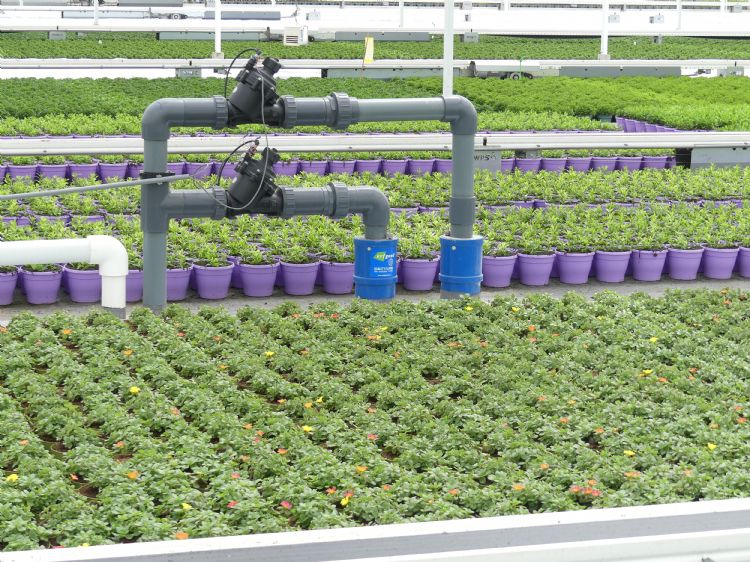- HOME >
- NIEUWS >
- Technology 28-09-2023
The most effective irrigation system for container crops

An ebb and flow system is the most optimal irrigation system for container crops. That is the final conclusion of a study on the effectiveness and pros and cons of irrigation systems, which HAS student Rick Pijnenburg conducted this spring. Whether it is actually interesting for a grower to invest in an ebb and flow system depends mainly on whether the payback period fits within his business and future strategy.
The research conducted by HAS student Rick Pijnenburg focused on identifying the most effective irrigation system for container crops, with a particular emphasis on tree nurseries. The study compared three primary irrigation systems: spray systems, ebb and flow systems, and drip systems, taking into account their advantages, disadvantages, and associated costs.
Spray systems: cheap, but mold pressure and growth retardation
Spray systems were found to be the most cost-effective option, with an investment of approximately 14 to 15 euros per square meter. They are quick to set up and do not require the installation of individual drippers, reducing the need for high pumping capacity. However, spray systems have significant drawbacks, including higher fungal pressure due to overhead watering, and they can stunt plant growth because of the shock effect caused by cold water on the plants.
Ebb and flow systems: expensive, but low labor and good crop growth
On the other hand, ebb and flow systems, while more expensive with an investment of 27 euros per square meter, offer several advantages. These systems require minimal labor, as they rely on the periodic flooding and draining of containers. This alternating water and air at the roots promote better crop growth and keep the plants dry, reducing the risk of fungal issues. Despite the higher initial cost, the advantages of ebb and flow systems often outweigh the expense.
Drip systems: good crop growth, but a lot of labor
Drip systems, which cost around 20 euros per square meter, also maintain dry conditions around the plants, promoting good crop growth and reducing the risk of fungal problems. However, the major downside is the significant labor required to install and maintain the drip system, which can be costly in terms of both time and labor expenses.
According to Pijnenburg's calculations, the additional labor cost associated with a drip system amounts to about 3,200 euros annually compared to an ebb and flow system. The payback period for an ebb and flow system, compared to a drip system, is estimated to be nearly 11 years on a half-hectare area with 10-liter pots. For smaller pot sizes, the payback period is even shorter. Ebb and flow systems also offer more automation opportunities, further shortening the payback period.
Final conclusion
In conclusion, both ebb and flow systems and drip systems offer good plant quality, with other systems showing more disadvantages. However, due to their superior advantages, ebb and flow systems are deemed the best and most suitable irrigation system for container crops. Nevertheless, the decision to invest in such a system depends on a grower's individual circumstances and long-term strategy. Older growers without successors may find it challenging to justify the longer payback period, whereas younger entrepreneurs may benefit from the system's advantages over time.